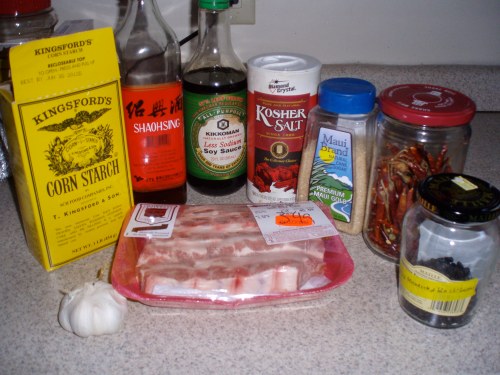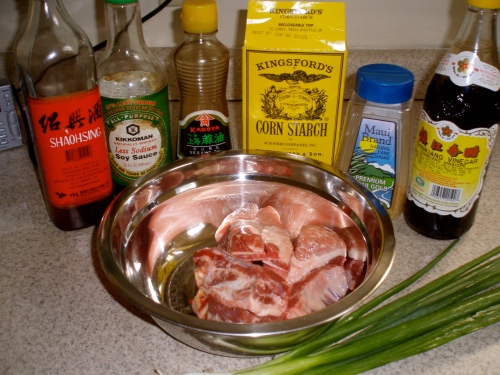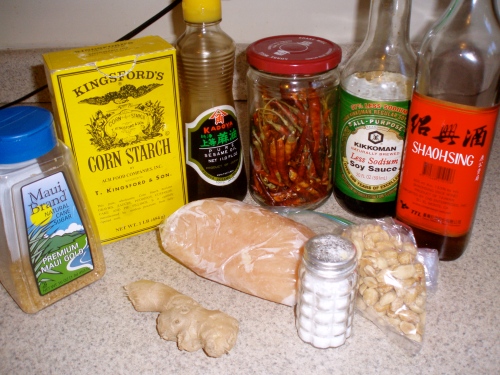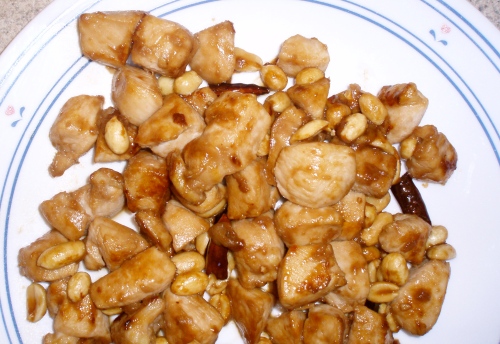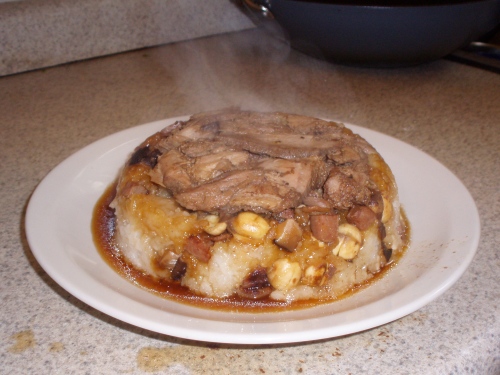from PM’s CC Vol II. Sticky rice, sweet red bean paste, and grated coconut on the outside…not the easiest dim sum to wrap but well worth it.
椰絲 yie2si1 — coconut shreds
糯米 nuo4mi3 — glutinous rice
球 qiou2 — balls
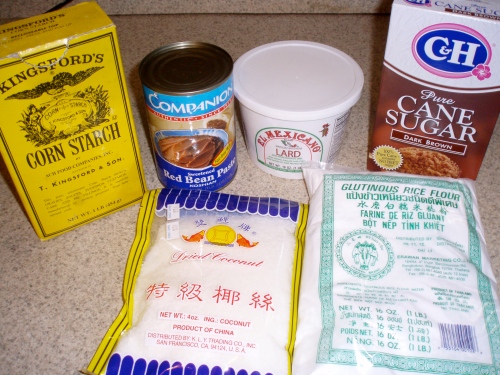
Not shown: boiling water.
Glutinous rice is that sticky stuff mochi is made from. Red bean paste is a sweet mashup of stewed azuki beans. Coconut is coconut, grated. PM also asks for 2 maraschino cherries, to be cut up and carefully placed on top of each rice ball. While that would be very pretty, I really can’t justify purchasing an entire jar of maraschino cherries to use two. I did try using a cut up raisin but it kept on falling off.
PM’s proportions on the dough are a little strange: her directions don’t call for nearly enough water to bring the dough together. I’m not sure how much more water I used; I think it was an extra half cup of boiling water and then cold water as needed to make a dough.
In terms of wrapping, I think the key is that the dough not be too dry (though it shouldn’t be gloppy either). It should just be damp enough that it doesn’t crack apart if you rip off a piece and press it. PM says to cut the dough into 20 pieces; each piece should be the size of a small egg. You can roll it in your hands and flatten it with your palms, keeping the center thicker than the edges.
No need to cut the red bean paste into 20 pieces either. My red bean paste was too wet to be cut anyway, and I just scooped about a teaspoon onto each wrapper. Gather the wrapper together like so, and gently roll it into a smooth-ish ball. It doesn’t have to be perfect, just try not to let the filling escape from the wrapper.
For the steaming step, be sure to grease the bottom of the pan where you’re placing the rice balls. I steamed these in two layers in my rice cooker; rice balls from the top layer came off the pan easily, but there were some serious sticking issues for the bottom, which is closer to the heat source. If you’re steaming with a water bath on the stovetop, sticking shouldn’t be an issue.
As you de-pan the rice balls, roll them in the grated coconut. Try to keep the un-coconut-ed ones covered in their steam bath, because if they dry before the coconut treatment, the coconut won’t stick, and that would be very sad.
PM says to wait for these to cool before serving, which is probably a good idea because the filling is very hot. Unfortunately the rice balls hardened up overnight, so I’d advise consuming them all the same day (an onerous task indeed). Hardened rice balls can be salvaged by covering with a damp paper towel and nuking in the microwave for 30 seconds or so.
Time taken: 1 1/2 hours
Difficulty level: pretty hard
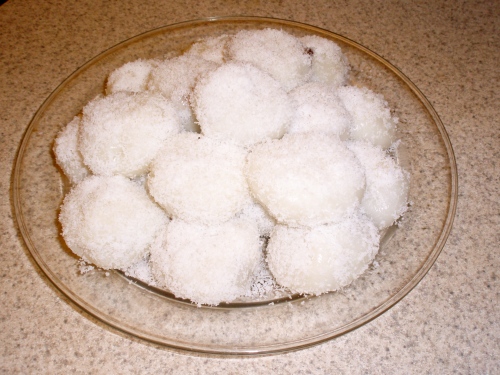
How cute are they?!
